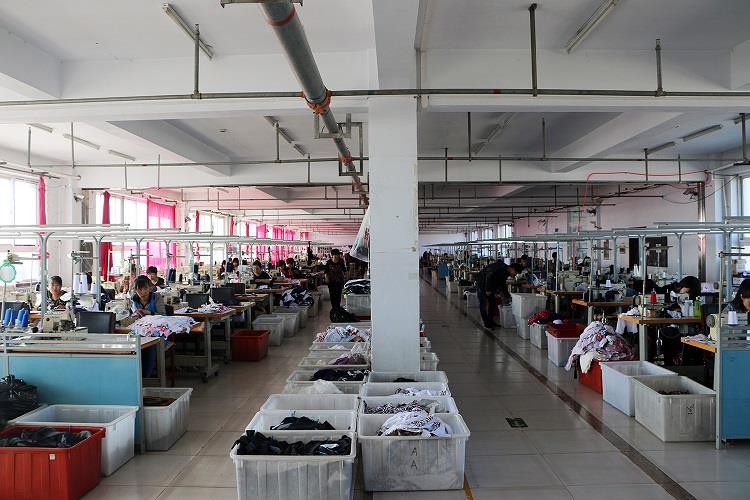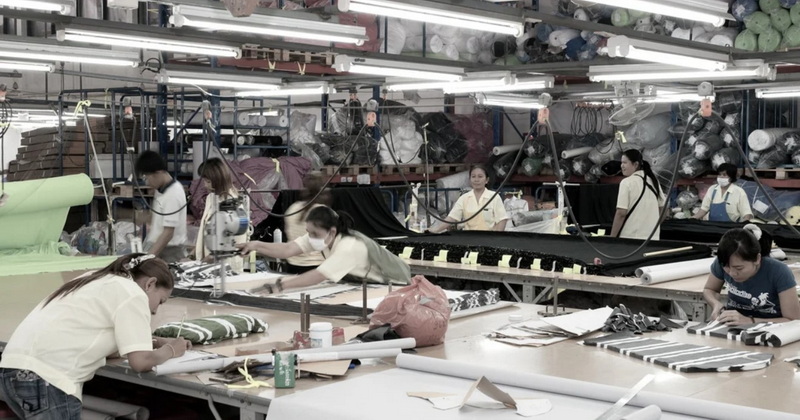Abely Fashion - Your Premier Swimsuit Manufacturing Partner
Located in Dongguan, China, Abely Fashion specializes in providing high-quality OEM production services for swimsuit brands, wholesalers, and manufacturers across Europe and the United States. Since our establishment in 2003, we have been dedicated to crafting stylish, comfortable, and durable swimsuit. With our exceptional craftsmanship, stringent quality control, and innovative design capabilities, Abely Fashion has become a trusted partner for renowned brands. Choose Abely Fashion, and elevate your brand with professional customization services and products that exceed expectations.
E-mail: sales@abelyfashion.com
Content Menu
● The Evolution of Swimsuit Factories
● The Fabric Selection Process in Swimsuit Factories
● Sustainability in Swimsuit Factories
● The Manufacturing Process in a Modern Swimsuit Factory
● Quality Control in Swimsuit Factories
● Innovations in Swimsuit Factory Production
● Challenges Faced by Swimsuit Factories
● The Future of Swimsuit Factories
● Conclusion
In recent years, the swimsuit factory industry has undergone a remarkable transformation, revolutionizing the way we think about and produce beachwear. From sustainable materials to cutting-edge manufacturing processes, swimsuit factories are at the forefront of innovation in the fashion world. This article delves into the intricate world of swimsuit production, exploring the latest trends, challenges, and opportunities that shape this dynamic industry.
The Evolution of Swimsuit Factories
The concept of a swimsuit factory has come a long way since the early days of swimwear production. In the past, swimsuit factories were often associated with mass-produced, generic designs that prioritized function over fashion. However, today's swimsuit factory is a hub of creativity, technology, and sustainability.
Modern swimsuit factories are equipped with state-of-the-art machinery and staffed by skilled artisans who combine traditional craftsmanship with innovative techniques. These factories are no longer just production lines; they are incubators for new ideas and designs that push the boundaries of what's possible in swimwear.

The Fabric Selection Process in Swimsuit Factories
One of the most critical aspects of swimsuit production is the selection of appropriate materials. Swimsuit factories today are faced with the challenge of choosing fabrics that are not only comfortable and stylish but also durable and resistant to the harsh effects of chlorine and saltwater.
In a typical swimsuit factory, the fabric selection process begins with a thorough evaluation of various materials. Spandex, polyester, and nylon remain popular choices due to their stretch, quick-drying properties, and resilience. However, many swimsuit factories are now exploring specialized fabrics that offer enhanced performance features.
Sustainability in Swimsuit Factories
The swimsuit factory industry has not been immune to the global push for sustainability. In fact, many swimsuit factories are leading the charge in adopting eco-friendly practices and materials. The use of recycled materials has become increasingly common in swimsuit production, with many factories opting for fabrics made from recycled plastic bottles or discarded fishing nets.
For instance, some innovative swimsuit factories are now using ECONYL and REPREVE, two well-known sustainable fabric choices made from recycled materials. These factories are not just focusing on the main fabric; even the ink used for fabric prints is often an eco-friendly product that meets OEKO-TEX standards.

The Manufacturing Process in a Modern Swimsuit Factory
The production process in a modern swimsuit factory is a fascinating blend of technology and craftsmanship. It typically begins with digital designing, where designers use Computer-Aided Design (CAD) tools to create and refine swimwear designs. This digital approach allows for greater precision and easier modifications before any physical prototypes are created.
Once the designs are finalized, the swimsuit factory moves into the cutting phase. Advanced cutting machines, operated by skilled workers, precisely cut the fabric according to the digital patterns. This stage is crucial for minimizing waste and ensuring consistency in sizing.
The next step in the swimsuit factory production line is sewing. This is where the cut pieces are assembled into the final product. Modern swimsuit factories often use specialized sewing machines designed to handle the stretchy, delicate fabrics used in swimwear. The sewing process requires a high level of skill and attention to detail to ensure that seams are strong and comfortable against the skin.

Quality Control in Swimsuit Factories
Quality control is a critical aspect of swimsuit factory operations. Each piece produced undergoes rigorous testing to ensure it meets the factory's standards for durability, fit, and performance. This may include stress tests to check seam strength, color fastness tests to ensure the swimsuit retains its vibrant colors after exposure to chlorine and sun, and fit tests on live models.
Innovations in Swimsuit Factory Production
Swimsuit factories are constantly innovating to stay ahead in a competitive market. Some of the latest innovations include:
◆ 3D Printing: Some advanced swimsuit factories are experimenting with 3D printing technology to create unique textures and designs that would be impossible with traditional manufacturing methods.
◆ Smart Fabrics: Certain swimsuit factories are developing fabrics with built-in UV protection or temperature-regulating properties, enhancing the functionality of their products.
◆ Custom Fit Technology: Using body scanning technology, some swimsuit factories can now produce made-to-measure swimwear that perfectly fits the customer's body.

Challenges Faced by Swimsuit Factories
Despite the advancements, swimsuit factories face several challenges. One of the biggest is the seasonality of demand. Most swimwear is purchased in the lead-up to summer, which can create intense pressure on factories during peak production times.
Another challenge is the increasing demand for sustainable practices. While many swimsuit factories are embracing sustainability, transitioning to eco-friendly materials and processes can be costly and complex.

The Future of Swimsuit Factories
Looking ahead, the future of swimsuit factories appears bright and full of potential. As technology continues to advance, we can expect to see even more innovations in materials and production processes. Virtual reality may play a role in design and fitting processes, while artificial intelligence could optimize production schedules and inventory management.
Moreover, as consumers become increasingly conscious of environmental issues, swimsuit factories that prioritize sustainability are likely to gain a competitive edge. We may see a rise in local, small-scale swimsuit factories that cater to niche markets and offer personalized products.
Conclusion
The swimsuit factory industry has come a long way from its humble beginnings. Today's swimsuit factories are at the cutting edge of fashion technology, blending traditional craftsmanship with innovative materials and processes. As we look to the future, it's clear that swimsuit factories will continue to play a crucial role in shaping the beachwear industry, driving innovation, and responding to the evolving needs and values of consumers worldwide.
From sustainable materials to custom-fit technology, the modern swimsuit factory is a testament to the industry's ability to adapt and innovate. As we continue to push the boundaries of what's possible in swimwear design and production, one thing is certain: the swimsuit factory will remain at the heart of this exciting and ever-evolving industry.




































































